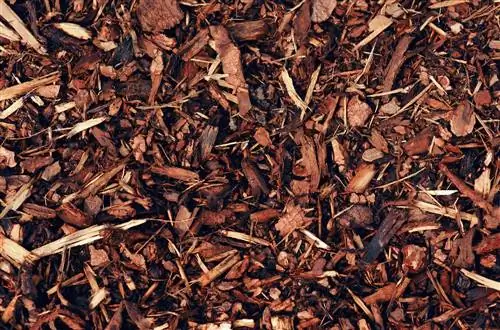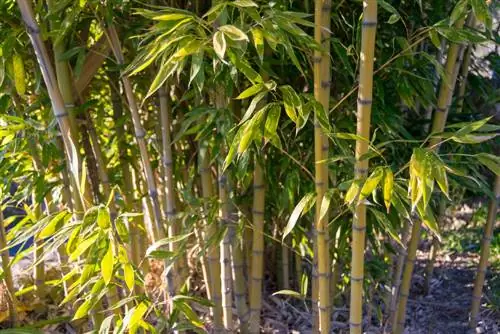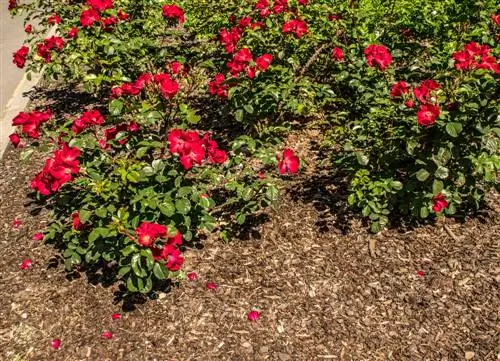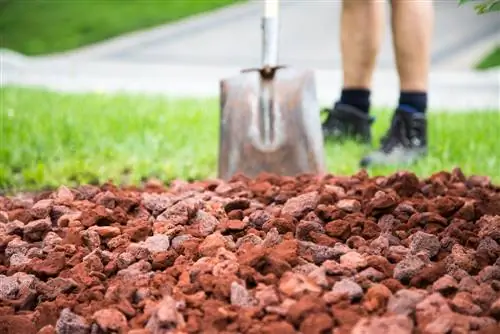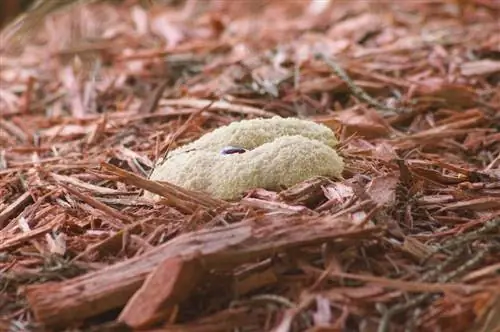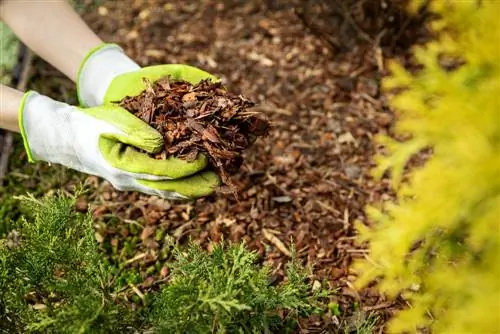- Author admin [email protected].
- Public 2023-12-16 16:46.
- Last modified 2025-01-23 11:22.
Although covering garden paths and floors offers many benefits, organic gardeners are skeptical. The reasons for this lie in the negative effects that bark mulch has on flora and fauna. These throw the living space out of balance.
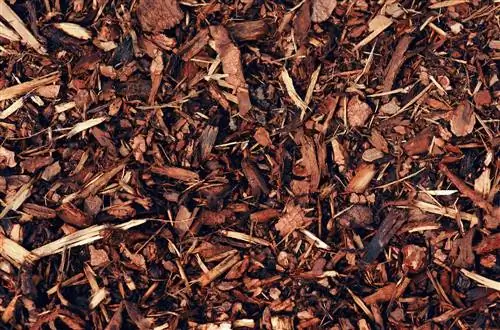
What disadvantages does bark mulch have in the garden?
Bark mulch can cause disadvantages such as nitrogen deprivation, intolerances in certain plants, the spread of snails and the loss of species in wild bees. Alternatively, there are mineral mulch layers, horn shavings, bark humus or dense planting with local wild herbs.
Nitrogen deprivation
The soil fauna ensures that the pieces of bark decompose into humus over the years. For their activity, the microorganisms require large amounts of nitrogen, which they remove from the soil. It is therefore not uncommon for plants that rely on the nutrient to suffer from deficiency symptoms. Mulching with pine bark is a disadvantage, especially for shallow-rooted plants. Their root system extends directly below the soil surface, where the nitrogen deficiency is clearly visible.
Prevention
To avoid this problem, you should supply the soil with a balancing fertilizer (€52.00 on Amazon). Horn shavings are well suited because they are long-term fertilizers. Bark humus is an ideal alternative because the substrate consists of already rotted shreds and coarse pieces of bark.
Intolerances
Shallow-rooted plants, lime-loving species and ground-covering trees don't like bark mulch just as much as freshly planted perennials. Species that are native to steppes and prairies or grow on stony substrates prefer nutrient-poor and calcareous conditions. The growth of such plant species would be negatively affected by covering them with pine bark.
These plants don't like bark mulch:
- Sedum and Euphorbia species
- herbaceous plants including yarrow, catnip, elecampane and man litter
- Mediterranean herbs such as lavender and various types of sage
- Ornamental plants such as spurflower, girl's eye, delphinium or lupine
- a variety of ornamental grasses
Options
Cover the subsoil in steppe and rock gardens with a mineral mulch layer of grit or gravel. The materials are low in nutrients and ensure optimal water drainage. Limestone chippings also increase the pH value of the soil, so that Mediterranean and lime-loving plants feel comfortable.
Snail dispersal
If the mulch is in an advanced stage of decomposition, moisture will increasingly accumulate between the shreds. A moist microclimate is created in which snails feel comfortable. They use the substrate as a hiding place during the day and place their clutches in the protected cavities.
Remedy
Only apply pre-dried bark mulch to the beds. To avoid direct waterlogging, you should mulch in dry weather. Loosen the substrate regularly to promote better ventilation.
Species loss
Two thirds of all 590 native wild bee species nest in the ground. They rely on open ground and subsoils with sparse vegetation. A layer of bark mulch blocks their access, so biodiversity is at risk from excessive mulching.
Variations
In order to prevent gaps in the bed and still give wild bees a chance to find a nesting place, you should plant the ground densely with native wild herbs. The different flowering and fruit ripening times allow the garden to shine in attractive colors all year round.
Tip
Leave wild herbs until they wither, as they provide an important food source for flower-visiting insects.

